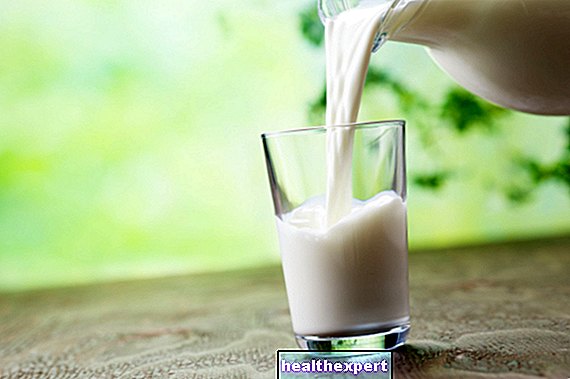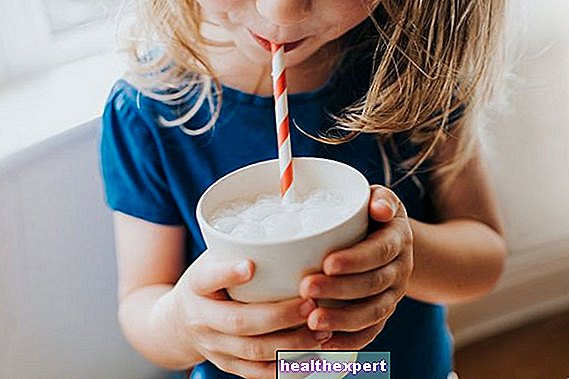Does milk make you fat? Here are the precautions to follow when we drink it
More and more people are choosing to eliminate lactose from their diet, considered the culprit of annoying illnesses and weight gains. But is milk always to blame for these ailments? 70% of adults claim to not be able to digest lactose properly ... check if you fall into this statistic too: watch the video and take note of the 5 signs to understand if you do not tolerate this element well.
Milk and false myths
On the forums and slimming sites the debate is open: does milk really make you fat? Is it better to remove it from my diet? Which type is preferred, whole or partially skimmed?
The answer is not unique, because each of us absorbs food in a different way: in principle we can say that milk does not make you fat, but that it is certainly a really rich substance in fats that not all intestines tolerate well. It is also true that milk is recommended in every meal plan, even in diets aimed at weight loss; so how to decide whether to add it for breakfast or as a snack?
By gathering as much information as possible with us!
The truth is that this very common food has often been the subject of strong criticism over time, so much so that in some cases false myths have been created around it.
One among many is the rumor that lactose leads to an increase in the waistline.
The nutrients contained in milk are really excellent for our body: for example the lipids, which are used to give us the right energy to face the day. Like any food, we must not exceed in its consumption, but it is highly recommended to drink a glass regularly .
If you are scared of the fat intake of the whole one, you can opt for leaner milks such as semi-skimmed or fully skimmed. But also consider the quality of calories that lipids contain: sometimes the nutritional aspect counts more. than the number of calories themselves.
See also




The types of milk on the market
In the shops there are different types of the drink that we all drank as children: the most common are the whole, the partially skimmed and the totally skimmed.
The differences between the products relate to the total fat content and the processing process to which the food was subjected. The most complete and rich element is certainly cow's milk, followed with less fat by the semi-skimmed and finally the totally skimmed, to which a significant percentage of lipids is removed by skimming.
You will surely have noticed other variants on the market, such as long-life milk, which unlike the "cousins" mentioned above, undergoes a different processing and lasts longer than fresh.
There are also those enriched with vitamins, calcium, omega 3 or vitamin D: they are all drinks that fill the nutritional deficiencies of the individual.
The milk supply is really varied, which is why it is good not to abuse its nutritional properties: even if the taste is palatable and even if we have established that it will not make you gain weight, it still limits the daily intake to the instructions on the package. The nutritional guidelines recommend the intake of one serving of milk or yogurt per day.

What does milk contain?
The food recommended by all pediatricians in the world contains a high number of nutritional elements such as calcium, zinc, phosphorus, proteins and various vitamins. All essential nutrients for staying healthy: it is estimated that drinking a cup of milk gives 16% of the daily value of protein needed for healthy and strong bones and muscles.
In addition, you must know that milk is mostly composed of water, and that therefore those substances contained internally make it a high food from the point of view of nutritional density, but low when it comes to energy density. In other words, milk is more nutritious than caloric: it is a liquid substance and its percentage of fat is around 3.6g per 100ml of whole, non-skimmed product.
The ratio drops further when we take the skimmed or fat-free types.
Below we list its nutritional principles in detail:
- carbohydrates, including lactose
- lipids, triglycerides and phospholipids
- proteins, such as casein and lactoglobulin
- mineral salts, see calcium and phosphorus
- vitamins, water-soluble and fat-soluble; the first category includes B2 and B12 while the second includes vitamin A and vitamin D

Which milk to prefer when on a diet
It depends on the type of diet. If the food plan is low-calorie, therefore aimed at losing weight, it is better to replace whole milk with partially skimmed or totally skimmed milk, because here there is a much lower percentage of fat: we are 3.6% fat of cow's milk against 1.5% of semi-skimmed milk and 0.2% of fully skimmed milk.
The flavor will be mild and lighter, due to the limited lipid count.
If, on the other hand, you are a sportswoman, keep your favorite milk, you need a lot of energy and a drink that will satisfy you: in the absence of intolerances, focus on whole or alternative milks to change consistency and diversify small pre-workout meals, such as those at hazelnut, rice, almond, soy, oat ...
The strong point that sportsmen find most is that it calms the appetite and if drunk for a long time it noticeably reduces fat mass, favoring the increase in muscle mass.
Why does whole milk give a greater feeling of satiety than skim milk? Thanks to the balanced presence of fats, carbohydrates and proteins that "deceive" our digestive system and keep it full for longer.
Always talking about diets and weight loss, did you know that there is also a milk diet? Read on to find out what it is!

The milk diet
A recent study claims that milk not only does not lead to fat, but even to lose weight.
Here then, diets were developed directly from Portugal, which have as their main element the drink loved by the little ones of the house! Milk is not only taken in its pure form, of course, but its derivatives such as cheeses and yogurt are also included in meals.
How does it work? Here are the rules to follow if you want to lose weight on the milk diet:
- take your favorite milk daily, as long as it is skimmed or partially cow's milk;
- in your menu you must also include eggs, lean meat and you must drink at least 2 liters of water a day;
- during the first days of the diet drink 6 glasses on the first day and 4 on the second, and insert two fruits of your choice;
- the third day passes to two glasses, two fruits and a light cheese;
- on the fourth day you are allowed no less than 4 glasses of milk, as well as a fruit of your choice and a lean meat;
- on the fifth day take 2 glasses of milk, two fruits of your choice, an egg and a steak;
- on the sixth day you have 2 glasses, a fruit, an egg, the steak and a light cheese;
- on the seventh day, consume 3 glasses of milk and 3 fruits;
- the last and eighth day ends with two glasses of milk, a fruit of your choice, a steak and light cheese.
It is not recommended to continue the diet beyond 8 days.
This diet is just one of the things you can do to stay fit and to maintain a healthy lifestyle: always prefer the comparison with a nutritionist and practice sports as a habit.